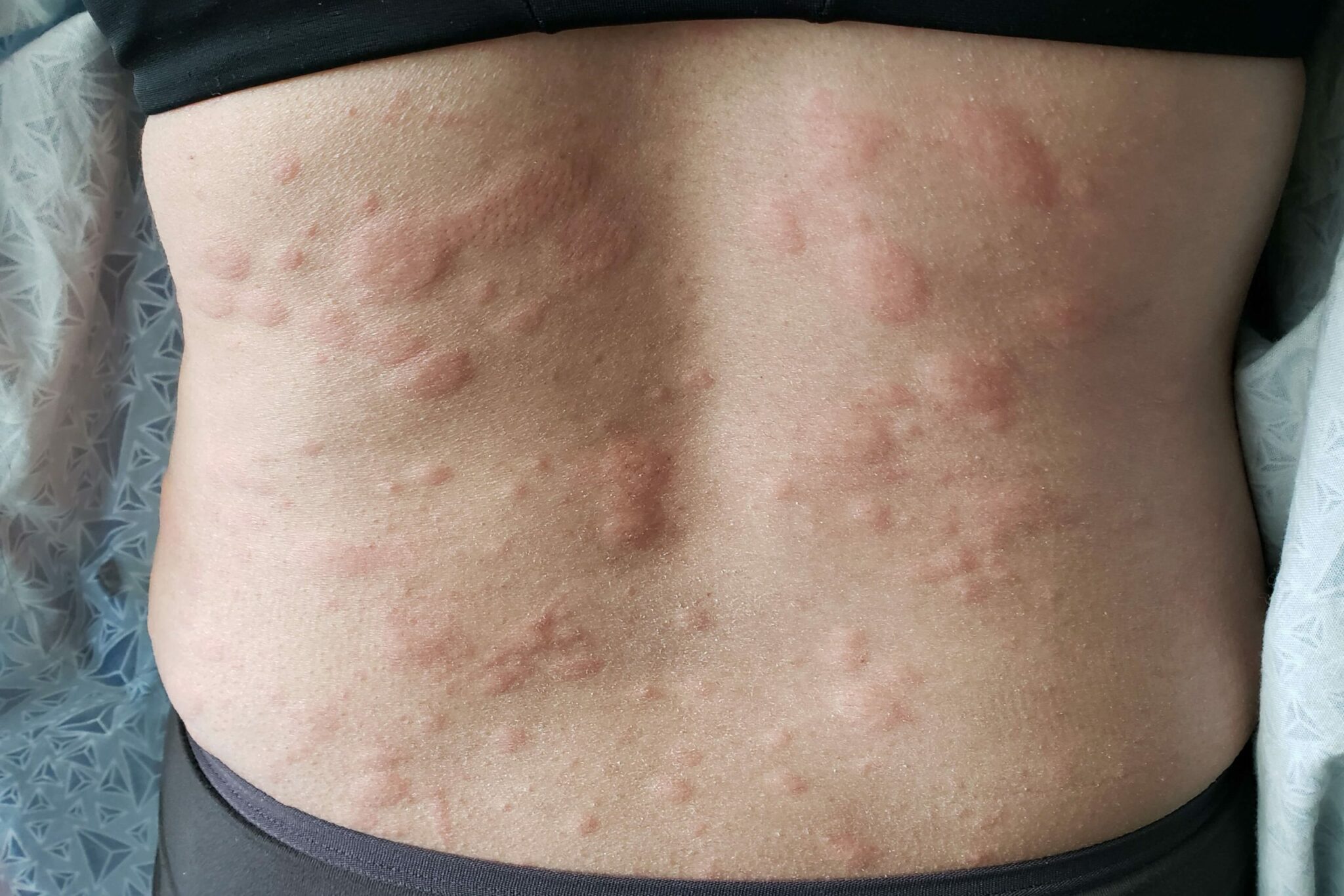What are Hives?


Hives are the body’s response to a stressor. While the stressor is most commonly an allergic trigger, people can break out in hives due to changes in temperature, stress, or even a viral infection. Hives (medically identified as urticarial) can be worrisome because they cause itchiness, redness, and can even sting, making them highly uncomfortable.
If your child suffers from hives, the cause may not always be known. If you see your child breaking out in hives, think back to what he or she has recently been exposed to. Examples of allergens that can cause hives include:
- Animal dander, such as cats or dogs
- Bee stings
- Food, such as berries, milk, nuts, shellfish
- Insect bites
- Medications, such as antibiotics
- Pollen
Other causes of hives may not involve an allergic reaction. This is true for hives caused by:
- Excess sweating and exercise
- Illness, such as lupus or leukemia
- Infections, such as mononucleosis
- Scratching
- Stress
- Sun exposure
These triggers signal the body to release histamine, a substance that causes inflammation in the body. Histamine causes blood vessels to leak fluid, which creates a red, blotchy appearance to the skin known as hives. Hives can range in size from small, red welts to large, red blotches that connect to each other. If you press the center of a hive mark, it should turn white. This occurrence is known as blanching and can help you differentiate a hive from another rash type of skin condition.
Hives can be either acute, meaning they last less than six weeks, or chronic, which lasts longer than six weeks.
Most hives are relatively harmless, save for the discomfort they can cause. Mild hives can subside with minimal treatment. Examples include:
- Applying an over-the-counter hydrocortisone cream
- Avoiding wearing tight-fitting clothes
- Refraining from taking hot baths or showers
- Taking an oral antihistamine, such as Benadryl
Taking an antihistamine daily can treat chronic hives. However, some people require medical attention and intervention. This is true when your child experiences angioedema, a condition that causes deep swelling, particularly around the eyes and lips. Hives can also cause anaphylaxis or a severe allergic reaction that makes it difficult to breathe. Seeking emergency treatment is vital in this instance. A physician can give you a shot of epinephrine, a medication that reverses severe symptoms.
Sources:
- American Academy of Dermatology
- Hives: Who Gets and Causes.
American Academy of Dermatology - Hives.
Brown University - Hives.
MayoClinic.com - Chronic Hives (Urticaria).
MedlinePlus - Hives.
Nemours Foundation - Help With Hives.
Nemours Foundation - Hives (Urticaria).
Powered by Bundoo®












































